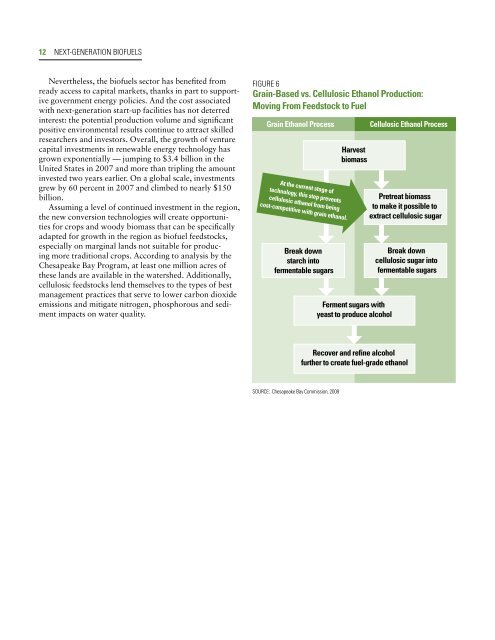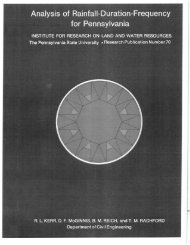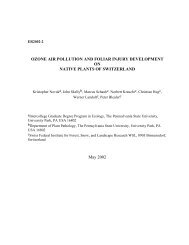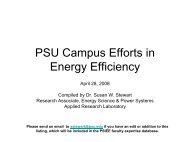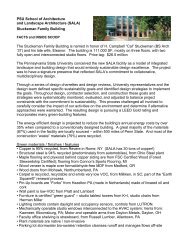Next-Generation Biofuels - Penn State Institutes of Energy and the ...
Next-Generation Biofuels - Penn State Institutes of Energy and the ...
Next-Generation Biofuels - Penn State Institutes of Energy and the ...
You also want an ePaper? Increase the reach of your titles
YUMPU automatically turns print PDFs into web optimized ePapers that Google loves.
12 NEXT-GENERATION BIOFUELS<br />
Never<strong>the</strong>less, <strong>the</strong> bi<strong>of</strong>uels sector has benefited from<br />
ready access to capital markets, thanks in part to supportive<br />
government energy policies. And <strong>the</strong> cost associated<br />
with next-generation start-up facilities has not deterred<br />
interest: <strong>the</strong> potential production volume <strong>and</strong> significant<br />
positive environmental results continue to attract skilled<br />
researchers <strong>and</strong> investors. Overall, <strong>the</strong> growth <strong>of</strong> venture<br />
capital investments in renewable energy technology has<br />
grown exponentially — jumping to $3.4 billion in <strong>the</strong><br />
United <strong>State</strong>s in 2007 <strong>and</strong> more than tripling <strong>the</strong> amount<br />
invested two years earlier. On a global scale, investments<br />
grew by 60 percent in 2007 <strong>and</strong> climbed to nearly $150<br />
billion.<br />
Assuming a level <strong>of</strong> continued investment in <strong>the</strong> region,<br />
<strong>the</strong> new conversion technologies will create opportunities<br />
for crops <strong>and</strong> woody biomass that can be specifically<br />
adapted for growth in <strong>the</strong> region as bi<strong>of</strong>uel feedstocks,<br />
especially on marginal l<strong>and</strong>s not suitable for producing<br />
more traditional crops. According to analysis by <strong>the</strong><br />
Chesapeake Bay Program, at least one million acres <strong>of</strong><br />
<strong>the</strong>se l<strong>and</strong>s are available in <strong>the</strong> watershed. Additionally,<br />
cellulosic feedstocks lend <strong>the</strong>mselves to <strong>the</strong> types <strong>of</strong> best<br />
management practices that serve to lower carbon dioxide<br />
emissions <strong>and</strong> mitigate nitrogen, phosphorous <strong>and</strong> sediment<br />
impacts on water quality.


